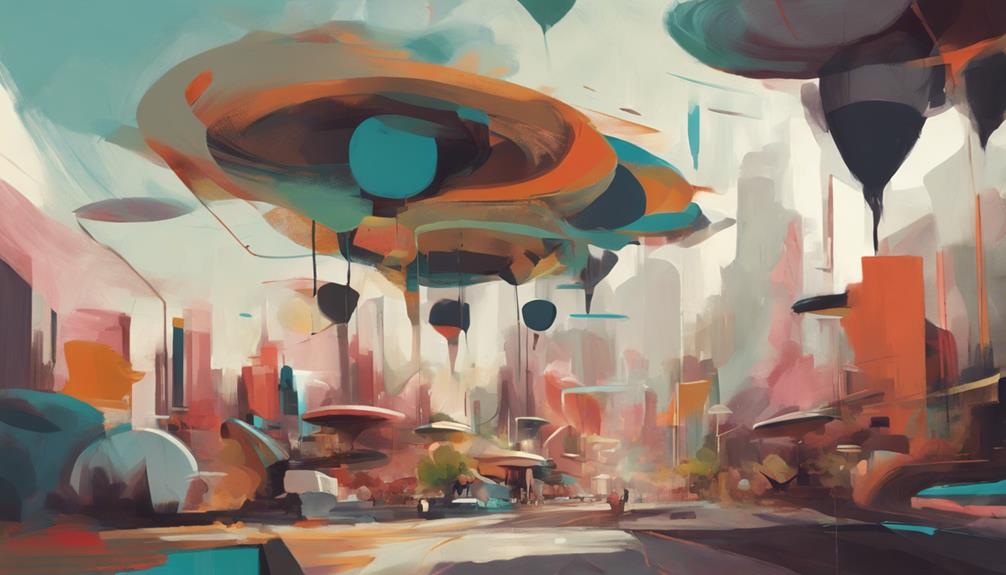The distinction between modern and traditional art lies at the core of artistic evolution, shaping perceptions and pushing boundaries. While traditional art is anchored in heritage and established techniques, modern art dares to challenge norms, inviting viewers to witness the unfolding of innovation and experimentation. Understanding the nuances between these two realms can shed light on how art has evolved over time and the impact it has on contemporary society. As we delve deeper into the intricacies of traditional versus modern art, we begin to unravel a rich tapestry of creativity and interpretation that captivates the imagination.
Key Takeaways
- Traditional art focuses on realism and religious themes, while modern art challenges norms and embraces innovation.
- Traditional art employs classical techniques and mediums like oil paint, whereas modern art explores diverse styles and materials.
- Traditional art captures historical events and cultural traditions, while modern art reflects societal shifts and individual perspectives.
- Traditional art adheres to established rules, while modern art encourages experimentation and revolutionizes artistic expression.
Definition of Traditional Art
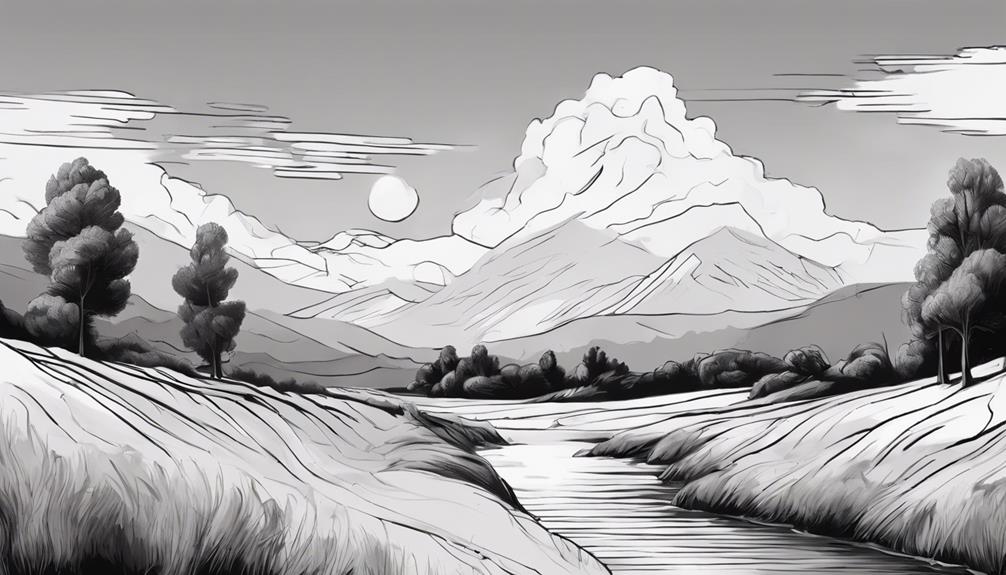
Traditional art, encompassing a period before the 1860s, is characterized by its emphasis on realism, religious themes, and adherence to classical techniques. Traditional painting, a significant component of traditional art, often involves the use of mediums like oil painting and egg tempera to depict subjects realistically. Artists in traditional art aim to capture subjects accurately, portraying narratives, religious stories, and historical events. This form of art prioritizes following traditional rules and conventions, focusing on classical techniques, perspective, and representing cultural traditions. Through traditional art, artists convey historical culture and beliefs, reflecting the values and norms of the society at that time. The emphasis on realism and classical techniques distinguishes traditional art from Modern Art, which emerged as a departure from these conventions. In summary, traditional art, particularly traditional painting, showcases a commitment to realism, religious themes, and classical techniques, providing a window into historical narratives and cultural heritage.
Characteristics of Modern Art
Modern art is characterized by a departure from traditional artistic norms, embracing a wide range of styles and movements that challenge the status quo. From Cubism to Abstract Expressionism, modern artists experiment with new forms of self-expression and reject established conventions. The evolution of modern art reflects shifts in society, technology, and individual perspectives, shaping a dynamic and thought-provoking artistic landscape.
Style in Modern Art
Characterized by a distinct departure from long-established artistic norms and conventions, modern art embodies a spirit of individuality, experimentation, and innovation in its various styles. In the realm of modern art, several key characteristics define its style:
- Personal Expression: Artists express their inner thoughts, emotions, and experiences through their work.
- Experimentation: Modern art encourages artists to push boundaries, explore new techniques, and challenge traditional artistic practices.
- Innovation: Artists in movements like Cubism, Surrealism, and Abstract Expressionism introduced groundbreaking approaches to art.
- Focus on Abstract Concepts: Modern art often delves into abstract ideas, emotions, and societal issues, reflecting the complexities of the modern world.
Influences on Modern Art
The evolution of modern art was profoundly shaped by the dynamic interplay of societal shifts, technological progress, and global events. Modern art, in contrast to traditional art, challenged established artistic norms by embracing experimentation and innovation. Influenced by the changing world around them, artists in the modern art movement sought to express personal and emotional perspectives rather than replicating reality. This departure from traditional art styles led to the emergence of various movements such as Impressionism, Cubism, and Pop Art, each reflecting the unique influences of their time. From the 1860s to the 1970s, modern art marked a significant departure from classical artistic traditions, paving the way for a new era of creativity and expression.
Key Elements in Traditional Art
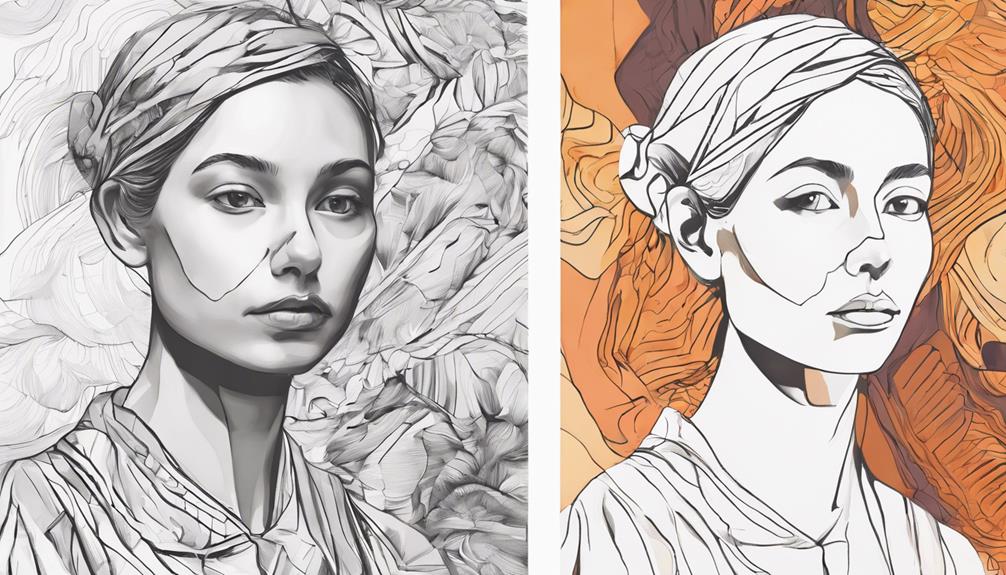
Key elements in traditional art encompass a dedication to realistic portrayal, meticulous attention to detail, and the utilization of conventional mediums like oil paint. Traditional art focuses on capturing subjects such as religious figures, historical events, and daily life with precision and accuracy. The following key elements are crucial in traditional art:
- Realistic Portrayal: Traditional art aims to represent subjects in a lifelike manner, often depicting them as they appear in reality.
- Attention to Detail: Artists in traditional art pay close attention to intricate details, enhancing the overall quality and depth of the artwork.
- Use of Traditional Mediums: Traditional art predominantly employs mediums like oil paint, which have been used for centuries to create enduring masterpieces.
- Adherence to Established Techniques: Artists in traditional art follow established artistic techniques and principles, emphasizing the importance of skill, craftsmanship, and mastery.
These elements collectively contribute to the timeless beauty and cultural significance found in traditional art forms.
Evolution of Modern Art Styles
The evolution of modern art styles was propelled by a combination of artistic influences in Modernism, technological advancements in art, and cultural shifts in creativity. Modern artists drew inspiration from various sources, challenging traditional techniques and pushing boundaries in their artistic expression. This era witnessed a significant departure from the conventional norms of art, paving the way for diverse and innovative approaches to creativity.
Artistic Influences in Modernism
Influenced by the rapid transformations brought about by industrialization, urbanization, and the upheavals of World Wars I and II, modern art emerged as a revolutionary departure from traditional artistic norms. This shift was evident in various ways:
- Challenging Traditional Norms: Artists such as Pablo Picasso and Marcel Duchamp broke away from conventional techniques and embraced new forms of expression.
- Focus on Social Commentary: Modernism rejected the notion of art solely for aesthetic purposes, instead emphasizing social, political, and cultural commentary.
- Rise of Movements: The evolution of modern art styles led to movements like Cubism, Surrealism, and Abstract Expressionism, each offering unique perspectives on the changing world.
- Questioning Established Conventions: Movements like Dadaism and Futurism reflected the dynamic nature of modern society and questioned established artistic conventions.
Technological Advancements in Art
Exploring the intersection of art and technology reveals a dynamic evolution in modern art styles. Technological advancements in modern art have revolutionized the way artists create and audiences engage with art. Artists now harness the power of computers, digital tools, and new media to push the boundaries of traditional artistic expression. Modern art styles such as digital art, video art, and installation art prominently showcase the impact of technology on artistic creation. This integration of technology into the creative process has led to interactive and immersive art experiences that captivate viewers. The evolution of modern art styles reflects a shift towards innovative forms and techniques, expanding the possibilities for artistic experimentation and pushing the boundaries of creativity.
| Impact of Technology in Modern Art |
|---|
| Enhanced Creativity |
| Interactive Experiences |
| Expanding Artistic Possibilities |
Cultural Shifts in Creativity
The trajectory of modern art styles from the initial stages of technological integration highlights a profound cultural shift towards innovative forms of artistic expression and creativity.
- Modern art styles evolved from the mid-19th century to the mid-20th century, embracing diversity and experimentation.
- Movements like Impressionism, Cubism, and Surrealism shaped the evolution of modern art styles.
- Modern art broke away from traditional norms, focusing on individual expression and challenging established artistic conventions.
- Artists in the modern art period explored new techniques, subjects, and interpretations, reflecting societal changes and technological advancements.
These shifts marked a departure from the constraints of traditional art, allowing for a more personal, subjective, and avant-garde approach to artistic creation.
Techniques in Traditional Art
Techniques employed in traditional art reflect a dedication to meticulous brushwork and a keen focus on detail. Traditional artists often use techniques like chiaroscuro, which involves the use of light and shadow to create depth and volume in their paintings. Additionally, layering colors is a common practice in traditional art to achieve richness and vibrancy in the final artwork. Artists in traditional art also adhere to established guidelines for composition and perspective, ensuring a harmonious balance in their works.
Moreover, the techniques in traditional art can vary depending on the medium used. For instance, oil painting techniques may differ from watercolor techniques, which in turn may differ from sculpting techniques. Each medium requires specific skills and approaches to achieve the desired artistic expression. Overall, the emphasis on precision, attention to detail, and adherence to traditional methods distinguishes traditional art techniques from those employed in modern art movements.
Innovation in Modern Art Movements
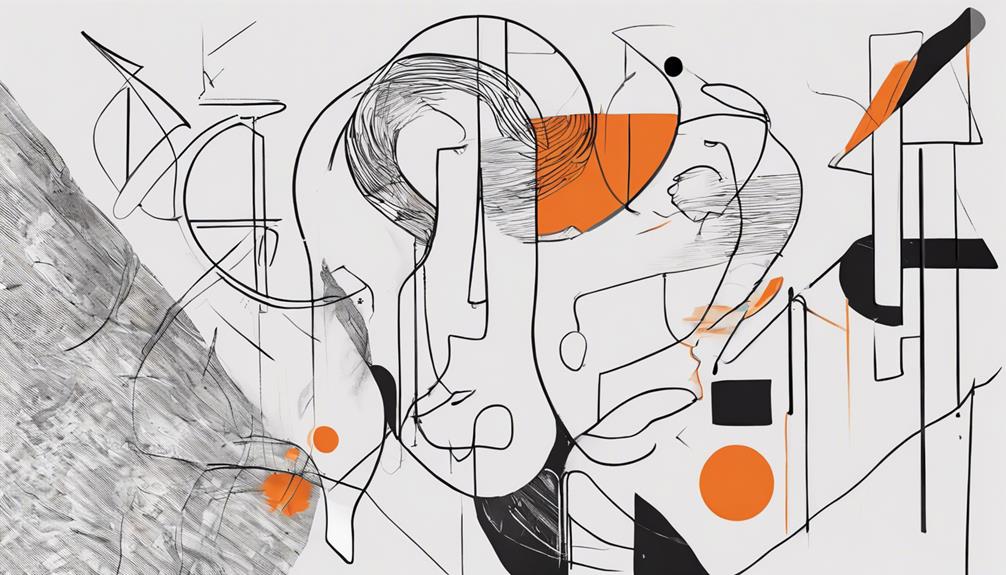
In modern art movements, a paradigm shift towards innovation and experimentation in artistic expression has fundamentally reshaped the traditional artistic landscape.
Key Aspects of Innovation in Modern Art Movements:
- Challenging Traditional Norms: Artists in movements like Cubism, Surrealism, and Abstract Expressionism defied conventional artistic standards, exploring new avenues of creativity.
- Emphasis on Emotions and Concepts: Modern art prioritized capturing feelings, ideas, and abstract concepts over realistic depiction, pushing the boundaries of traditional representation.
- New Perspectives and Interpretations: The exploration of unconventional approaches allowed artists to present alternative viewpoints and interpretations of reality, enriching the art world.
- Freedom from Traditional Constraints: By fostering creativity beyond the limits of tradition, modern art movements revolutionized artistic expression, paving the way for diverse and innovative artistic practices.
Through innovation, experimentation, and unconventional approaches, modern art movements brought a breath of fresh air to the art world, inspiring future generations to think beyond the confines of tradition and embrace limitless creative possibilities.
Themes in Traditional Artworks
Exploring the rich tapestry of themes prevalent in traditional artworks unveils a diverse spectrum of narratives deeply intertwined with religious, historical, and cultural aspects. Traditional art themes often revolve around religious narratives, historical events, and cultural traditions. Mythical stories, folklore, and legends are commonly depicted, showcasing a blend of imagination and tradition. Traditional art frequently focuses on portraying the human figure in a realistic and symbolic manner, emphasizing the connection between humanity and spirituality. These themes not only serve as a form of artistic expression but also reflect societal norms, values, and beliefs of the time period in which they were created. Nature, landscapes, and depictions of daily life in different cultures are also prominent themes, providing a window into the past and offering insights into the collective consciousness of societies. The table below summarizes the key themes found in traditional artworks:
| Themes | Description | Example |
|---|---|---|
| Religion | Depiction of religious narratives and spiritual beliefs | Religious paintings, sculptures |
| History | Representation of historical events and cultural traditions | Battle scenes, cultural ceremonies |
| Culture | Exploration of cultural practices, traditions, and customs | Festivals, traditional attire |
Trends in Contemporary Art
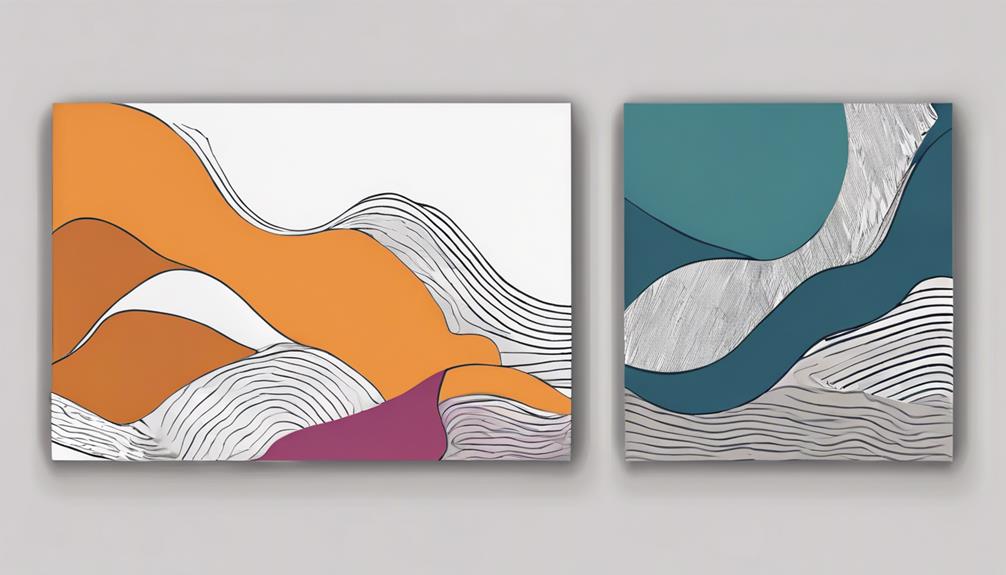
What are the defining characteristics of the current trends shaping contemporary art practices?
- New Media Art: One prominent trend in contemporary art is the utilization of new media, such as digital technology, video art, and interactive installations. Artists are exploring the boundaries of traditional art forms through digital mediums.
- Social Practice Art: Contemporary artists are increasingly engaging with social issues and community involvement through their art. Social practice art focuses on collaboration, participation, and social change, blurring the lines between art and activism.
- Exploration of Identity and Globalization: Many contemporary artists delve into themes of identity, cultural diversity, and the impact of globalization on society. Through their work, they challenge conventional notions of identity and cultural boundaries.
- Integration of Technology: Technology plays a significant role in shaping contemporary art practices. Artists incorporate virtual reality, augmented reality, and interactive elements into their artworks, creating immersive experiences for the audience.
Impact of Traditional Vs. Modern Art
With the evolution of art movements and societal shifts, the impact of traditional versus modern art has been a pivotal aspect in shaping the trajectory of artistic expression and cultural perception. Traditional art, rooted in depicting historical events and religious themes, served as a documentation of important figures, often commissioned by religious institutions and the wealthy. On the other hand, modern art aimed to break away from traditional boundaries and challenge norms, critiquing societal norms and values rather than solely preserving them. Modern art encouraged diverse styles and subjects, promoting experimentation and change, contrasting with the realism, perspective, and order prioritized in traditional art. Movements like Cubism, Surrealism, and Abstract Expressionism emerged as responses to a changing world, reflecting present-day ideas and technologies. While traditional art preserves historical culture and knowledge, modern art shapes contemporary expressions by reflecting and sometimes challenging societal norms and values, creating a dynamic dialogue between the past and the present.
Frequently Asked Questions
What Makes Modern Art Different?
In comparing modern art with traditional art, key distinctions emerge. Modern art, characterized by abstract expressionism and minimalism, diverges from conventional artistic forms. Influenced by postmodern ideas and conceptual art, modern artists often challenge societal norms. Movements like Surrealism and pop art further showcase the innovative and unconventional approaches embraced in modern art. This departure from realism and emphasis on individual interpretation sets modern art apart from its traditional counterparts.
What Are the Similarities Between Modern and Traditional Art?
Both modern and traditional art forms share similarities in the techniques used, cultural influences, and subject matter explored. Artists in both genres employ fundamental artistic skills to create their works, drawing inspiration from historical and cultural references. Additionally, both modern and traditional art can convey messages or ideas to the audience, allowing for a deeper connection between the artwork and the viewer. These shared characteristics contribute to the appreciation and understanding of art across different styles and time periods.
What Is the Difference Between Traditional Art and Folk Art?
Folk art and traditional art differ in their cultural representations and aesthetics. Traditional art, rooted in history and technique, encompasses a wider range of mediums and techniques, reflecting broader societal values. In contrast, folk art emphasizes symbolism, craftsmanship, and storytelling specific to local communities. While traditional art may be more formal and diverse, folk art's focus on cultural heritage and everyday life creates a distinct artistic expression deeply connected to regional traditions within a larger cultural context.
What Is the Difference Between Modern Art and Modernist Art?
Modern art encompasses a broad spectrum of artistic movements from the late 19th to the mid-20th century, including Impressionism, Cubism, and Surrealism. In contrast, modernist art specifically refers to the early 20th-century movement that rejected traditional artistic conventions, emphasizing individual expression and experimentation with abstract forms. Modern art further evolved into Postmodernism, incorporating styles like Abstract Expressionism and Minimalism, showcasing a continued departure from traditional artistic norms.
Conclusion
In the realm of art, traditional and modern forms embody distinct philosophies and aesthetics. Traditional art cherishes historical roots and beauty, while modern art embraces experimentation and personal expression. Both styles coexist, each reflecting the evolution of human thought and culture. As society progresses, art continues to evolve, challenging norms and boundaries to create new forms of expression that resonate with contemporary audiences.
